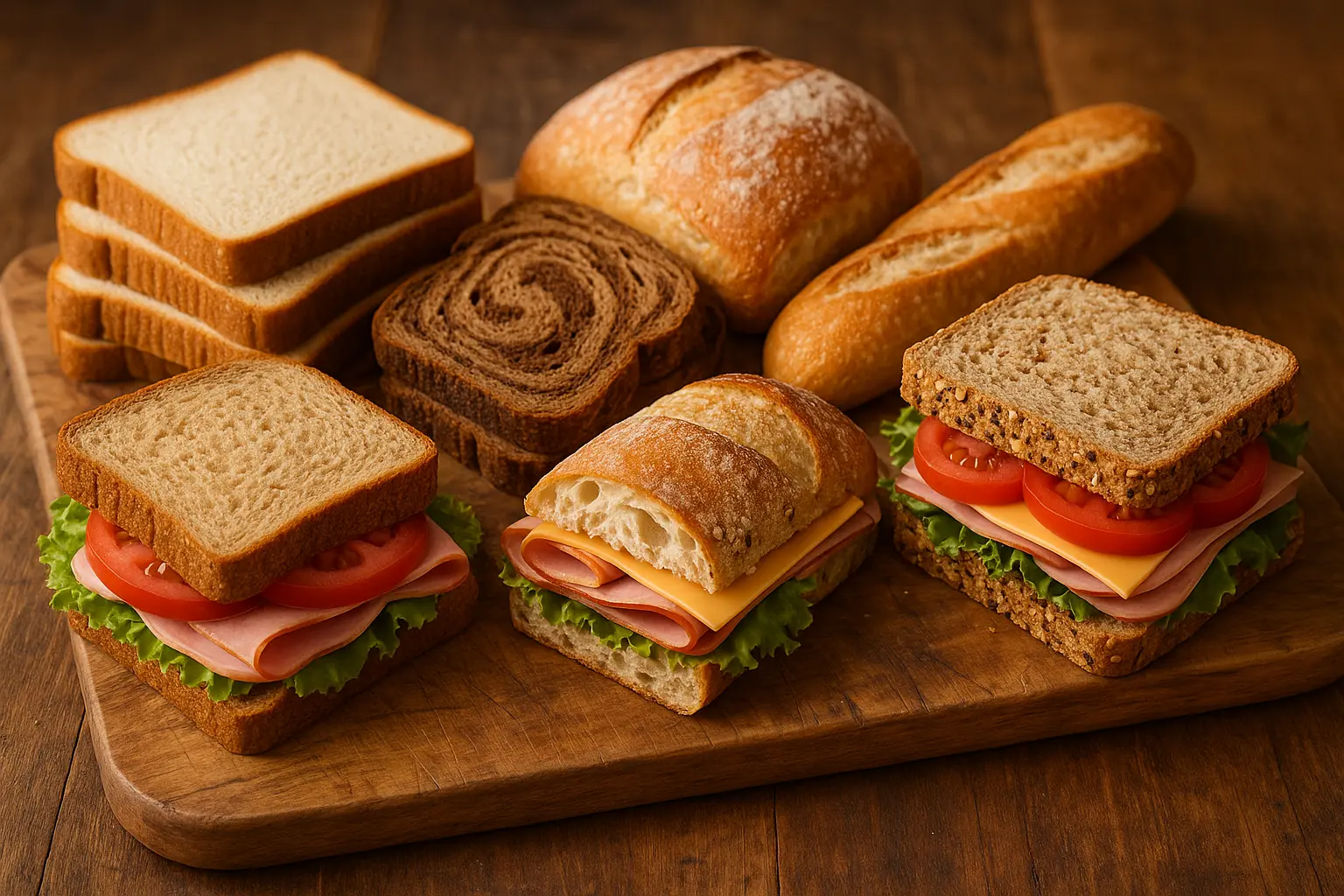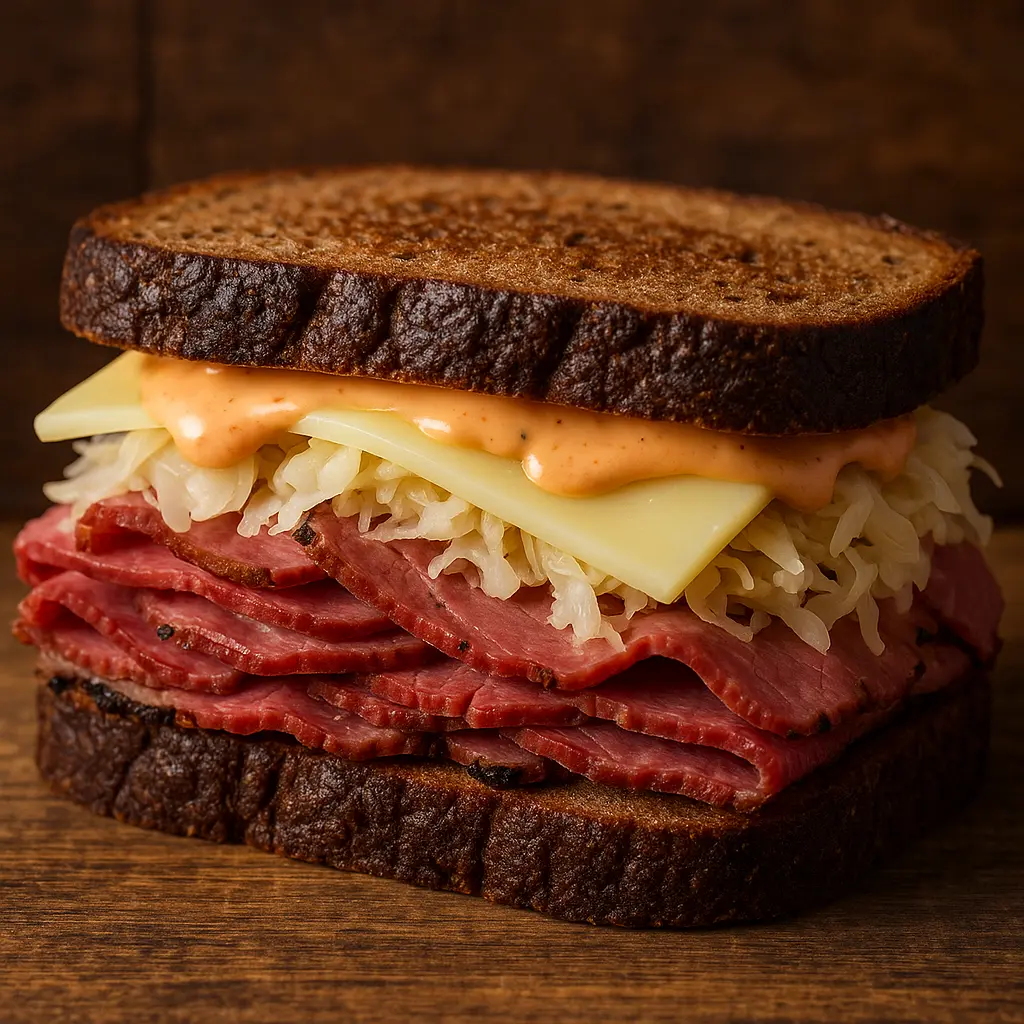When it comes to crafting the best sandwich breads, the choice of bread can make or break your meal. You might wonder why so many fuss over what seems like just a simple base. Well, bread isn’t just a vehicle holding your fillings — it’s an essential flavor and texture partner. Whether you’re building a quick weekday lunch or a gourmet creation, picking the right bread elevates your sandwich to something truly memorable.
Understanding the variety of bread types for sandwiches is crucial. From the soft and airy white loaf to the dense, hearty multigrain, the options are vast. If you’re curious about the popular sandwich bread types and what suits your taste best, check out this comprehensive guide on popular sandwich bread types. It’s a great starting point if you want to explore your options.

Why Bread Choice Matters in Sandwich Making
Choosing the right bread is more than just taste; it’s about texture, sturdiness, and even how it pairs with fillings. Some breads soak up sauces without falling apart, while others add a delightful crunch. The best sandwich breads provide balance — they support the fillings and enhance the overall experience. Curious how a simple bread swap can transform your everyday sandwich? Dive into tips on making a soft, fluffy loaf to get inspired.
Overview of Popular Bread Types for Sandwiches
Bread varieties like white sandwich loaf, whole wheat, and rye are staples in sandwich making, each bringing unique flavors and textures. Artisan options such as ciabatta and baguette introduce crusty edges and chewy interiors that stand out. The myriad of options invites you to experiment and find your perfect match. For a deep dive into the delightful creation of bread and fillings, visit this page.
White Bread: Classic and Versatile
White bread reigns as a classic choice for sandwiches—think soft, pillowy, and mild-flavored. Its delicate crumb and soft crust make it the perfect canvas for everything from simple PB&Js to towering deli sandwiches. Its versatility means it doesn’t compete with your fillings but lets them shine. Many stores and bakeries offer great white sandwich loaves that maintain freshness and softness, ideal for a quick, satisfying meal.
Whole Wheat and Multigrain: Healthy and Hearty Options
Looking to boost nutrition without sacrificing taste? Whole wheat and multigrain bread are go-to options. These breads bring a hearty texture and a nutty flavor, complementing proteins and vegetables beautifully. They often contain seeds or grains, adding a nice crunch and richness. For those mindful of health, choosing nutritious breads like these can really elevate your sandwich game. Explore more on healthy store bought bread options to learn about their benefits.
Rye Bread: For Robust Delis and Bold Flavors
Rye bread stands out with its dense texture and slightly tangy, earthy flavor — perfect for robust sandwiches like Reubens or pastrami stacks. Its darker crumb and distinct taste complement strong fillings wonderfully. Rye’s natural sturdiness keeps your sandwich perfectly intact, making it a favorite for those craving bold, authentic deli experiences.

Sourdough: Tangy and Textured Choice
There’s something about sourdough bread that sings with a tangy zip and chewy texture. It’s a fabulous choice for hearty fillings and melts, giving an artisanal touch to any sandwich. Plus, its crusty exterior provides a satisfying crunch, while the interior stays soft. If you want to master making a soft, fluffy loaf with sourdough, check this detailed recipe to get started.
Artisanal Breads: Ciabatta, Baguette, and Others
When you crave something a little rustic and fancy, artisanal breads like ciabatta and baguette come into play. Ciabatta’s open crumb and crisp crust make it a sturdy, chewy base, great for paninis or Italian-style sandwiches. The baguette, with its long, slender form and crusty exterior, holds up well to flavorsome fillings. These breads bring a texture and character that’s hard to beat for traditional or gourmet sandwich creations.
Brioche and Challah: Sweet and Soft
If you love a touch of sweetness and buttery softness, brioche and challah are your friends. These enriched breads add a subtle richness and softness, turning sandwiches into an indulgent treat. Brioche works beautifully with grilled cheese or fried chicken sandwiches, while challah’s slightly eggy profile pairs well with savory or sweet fillings alike. Their soft bread nature ensures the fillings stay cozy inside without overwhelming the palate.
Hoagie and Sub Rolls: The Classic Sandwich Bases
For classic sandwich builds like hoagies and subs, hoagie rolls and sub rolls are top picks. These breads are designed for heftier fillings and tend to have a soft crumb with a sturdy exterior, preventing sogginess. Ideal for stacking meats, cheeses, and veggies high, they create satisfying handheld meals. Their classic soft crust and fine crumb make every bite balanced and hearty.
Gluten-Free and Keto-Friendly Breads
Dietary needs don’t mean giving up on great bread. The market now offers fantastic gluten-free bread and keto-friendly bread options tailored to various health preferences. These breads often use alternative flours like almond or coconut flour and flaxseed, providing a different but delightful texture and flavor. Exploring these breads widens the sandwich lover’s horizon, especially if you’re following specific dietary plans. For healthier bread selections, you might also want to check out some nutritious accompaniment ideas.
Matching Bread Texture and Flavor with Fillings
Picking the best sandwich breads really comes down to harmony between bread and fillings. Imagine a juicy, saucy sandwich – do you want a bread that absorbs excess moisture or one that resists sogginess? Soft bread pairs well with delicate fillings, while crusty, dense bread balances out rich, chunky ingredients. The texture should complement rather than overpower – it’s like finding the perfect dance partner in flavor and form.
Considerations for Different Types of Sandwiches
Different sandwiches call for different breads. A grilled cheese deserves a bread that toasts beautifully, melting with the cheese, like a buttery white or sourdough. On the other hand, deli sandwiches shine on rye or multigrain due to their bold flavors. Subs and hoagies demand sturdier rolls for those hefty fillings. Knowing the sandwich style helps you zero in on the bread that will carry it best, making your eating experience flow smoothly and deliciously.
Dietary Preferences and Restrictions
With diverse dietary needs, choosing bread also means considering gluten content, calories, and nutrition. For gluten-sensitive eaters, gluten-free options exist without sacrificing taste. Those on low-carb or keto diets can find specially formulated breads made from protein-rich flours. Whole wheat and multigrain offer fiber and nutrients for healthier choices. Balancing taste, texture, and health is key to satisfying sandwiches for all.
What to Look for When Purchasing Bread
When picking out sandwich bread, freshness and texture should be your top priorities. Look for breads with a soft crumb and crust that suits your sandwich style — like soft bread for wraps or crusty bread for rustic subs. Check ingredient lists for preservatives if you prefer organic sandwich bread or want to avoid additives. It’s also smart to buy from trusted bakeries or brands known for quality. To learn more about perfect soft and fluffy homemade bread, you can visit this helpful resource.
Proper Storage Methods to Maintain Freshness
Once you bring your bread home, keeping it fresh is essential. The best methods for storing bread involve cool, dry places wrapped in breathable materials to avoid mold. Avoid refrigerating bread as it can dry it out quickly. Instead, freezing slices you won’t use right away protects freshness. For an in-depth look at bread storage tips, check out this guide on how to store sandwich bread.
International Sandwich Bread Varieties
Bread choices around the world showcase unique textures and flavors. From fluffy Japanese milk bread used in katsu sandwiches to the Cuban bread that crisps up beautifully in a pressed Cuban sandwich, the diversity is fascinating. To explore more about the exciting international sandwich bread varieties, you can visit this informative article.
Unique Bread Choices for Regional Sandwich Styles
Regional sandwiches shine with breads that reflect local traditions. Think soft slider buns for tiny, flavor-packed snacks or seeded breads that add crunch and earthiness to suburban deli sandwiches. Flatbreads and wraps offer lighter, portable options in Mediterranean and Middle Eastern cuisines. Each bread brings a cultural story and unique eating experience to the table, inspiring you to try new sandwich styles and flavors.
FAQs
What are the most common breads for sandwiches?
Common breads include white bread, whole wheat, rye, sourdough, and multigrain. These breads vary in texture and flavor, making them versatile choices suitable for a wide range of sandwich fillings. Staples like baguettes and ciabatta offer a crustier option for heartier sandwiches.
What bread is best for deli sandwiches?
Rye bread and whole wheat are excellent for deli sandwiches due to their robustness and complementary flavors with meats and cheeses. Hoagie rolls and sub rolls also provide sturdy bases for classic deli stacks, holding up well with multiple layers of tasty fillings.
Is white bread or whole wheat bread better for sandwiches?
White bread is softer and milder, ideal for simple or delicate sandwiches, while whole wheat bread adds a nutty flavor and is healthier due to its fiber content. Your choice depends on taste preference and dietary goals.
What bread is best for grilled sandwiches?
Breads that toast well, such as white bread or sourdough, are the best for grilled sandwiches. Their texture crisps up nicely, creating a perfect crunchy exterior that holds melted cheese and warm fillings.
Are there special breads for specific sandwiches?
Yes! For example, rye bread is traditional for Reuben sandwiches, ciabatta for paninis, brioche for gourmet chicken sandwiches, and Cuban bread for Cuban sandwiches. Each bread complements the unique fillings and enhances the overall flavor.
What are the healthiest bread choices for sandwiches?
Whole wheat, multigrain, and breads made with seeds or organic ingredients generally classify as healthy bread options. Gluten-free and keto-friendly breads cater to specific dietary needs while offering nutritious alternatives. Choosing breads with minimal additives and high fiber is key.
Conclusion
Choosing the right bread is essential to elevate any sandwich experience. From classic white to hearty rye or specialty gluten-free options, the bread should complement the fillings and meet consumer preferences. Understanding bread textures, flavors, and dietary considerations helps create delicious, well-balanced sandwiches. Experimenting with different breads can also add cultural and creative flair to everyday meals. With proper selection, buying, and storage, great sandwich bread enhances taste, structure, and enjoyment, ensuring every bite is a delight.

1 thought on “Best Sandwich Breads: Types, Uses & Healthy Options”